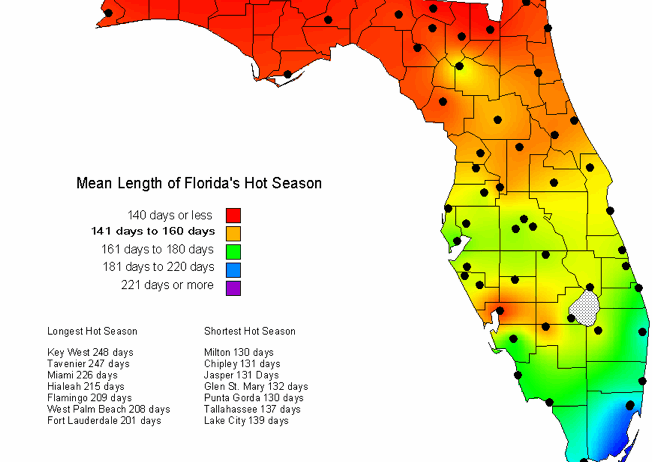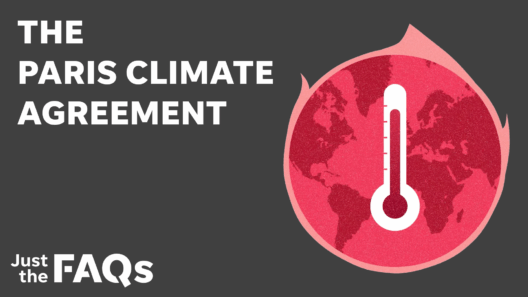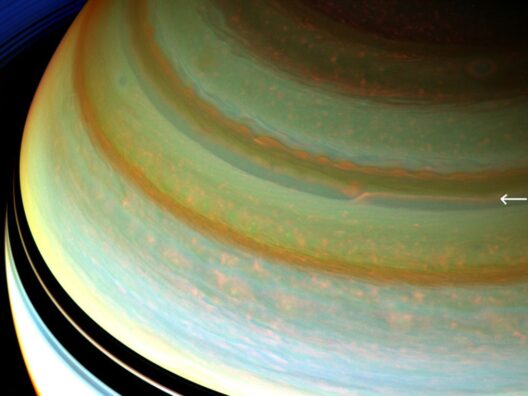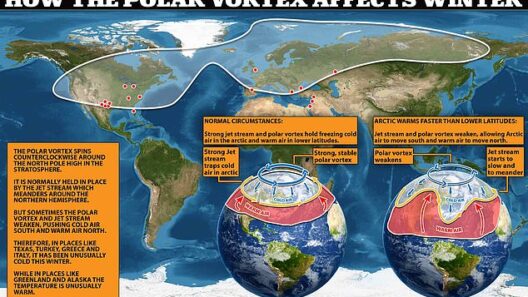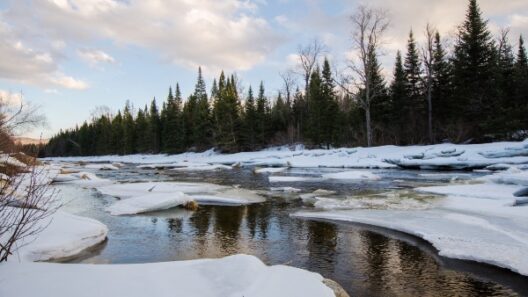When one thinks of Florida, images of sun-soaked beaches, palm trees swaying in the gentle breeze, and vibrant nightlife often immediately come to mind. However, this idyllic image belies a climatic reality that is complex and multifaceted—more than just sunshine and storms. Have you ever contemplated the genuine implications of Florida’s climate on its inhabitants and the ecosystem? It provokes a challenge: how does one responsibly navigate the consequences of a warming environment amidst idyllic settings?
Florida’s climate is primarily classified as humid subtropical, which greatly influences the state’s weather patterns, flora, and fauna. Yet, this classification does not adequately encapsulate the myriad factors at play. The interplay between the oceanic influences of the Gulf of Mexico, the Atlantic Ocean, and the state’s geographical features contributes to climate anomalies that can have far-reaching consequences.
To fully appreciate Florida’s climate, it is essential to delve into the seasonal variations that define the state’s weather. The state’s summer months stretch from June to September, characterized by high humidity and sweltering temperatures that frequently soar into the 90s Fahrenheit. This period, while synonymous with beach visits, also serves as a precursor to Florida’s notorious hurricane season. The question arises: how do such extreme weather conditions affect local ecosystems and the human populace? The answer reveals a precarious balance that can tip towards calamity.
As storm clouds gather, they bring with them not just rain, but also the threat of hurricanes and tropical storms, events that are becoming increasingly frequent and intense due to climate change. These meteorological events can wreak havoc on communities, resulting in devastating floods, property damages, and displacement of residents. In a state that is home to millions, the preparedness and resilience of urban planning are put to the test. Local governments and community organizations grapple with the challenge of incorporating climate resilience into infrastructure development, ensuring that homes and public spaces can withstand nature’s fury.
The interplay between Florida’s climate and its ecosystems is equally noteworthy. The state boasts a rich biodiversity, with numerous species ranging from the majestic manatee to the elusive Florida panther. However, climate change poses an existential threat to these species and their habitats. Rising sea levels and increasing temperatures can lead to the loss of crucial wetlands—breeding grounds for countless aquatic species. How, then, do we reconcile the state’s growth and development with the urgent need to protect its unique natural heritage?
This dilemma ignites a passion for advocacy. Environmentalists caution against unchecked urban sprawl and the subsequent encroachment upon natural habitats. Legislative efforts must prioritize preservation and restoration initiatives as storm surges and heavy rainfall erode coastlines and disrupt ecosystems. This evolution of thought prompts a vital discourse: should Florida prioritize ecological stability over developmental ambition? How can we cultivate a culture of sustainability that honors the intrinsic value of nature while accommodating human needs?
The agricultural sector is another sphere where Florida’s climate has profound implications. Known as the “Sunshine State,” Florida’s subtropical environment supports a thriving agricultural industry, especially in citrus production. Yet, the climate’s fickle nature can spell disaster for farmers reliant on consistent weather patterns. Increased occurrences of drought and irregular rainfall challenge traditional farming practices, urging farmers to adopt innovative strategies that align with the changing climate. This pivot toward agritech is not merely a trend but rather an urgent necessity to ensure food security for future generations.
Moreover, the melding of tourism and climate further complicates Florida’s state climate. Tourists flock to Florida year-round, drawn by its climate and recreational opportunities. However, climate change threatens to alter this landscape. What happens when heat waves become intolerable or hurricanes make landfall during peak vacation seasons? The tourism industry requires a paradigm shift, emphasizing sustainable practices that can accommodate both visitors and the delicate ecosystems they come to enjoy. In a broad sense, can tourism adapt to shifting seasonal patterns while ensuring minimal impact on the environment?
To address these pressing challenges, community education and engagement are paramount. Floridians must cultivate an awareness of climate issues, from beachfront property owners to farmers deep in the Everglades. Grassroots movements and educational programs can empower residents to take actionable steps in their locales, raising awareness about conservation efforts, emergency preparedness, and sustainable practices. Collective action can foster a communal ethos that champions resilience in the face of climate challenges.
Florida’s climate is not simply a backdrop for idyllic scenes; it is a living entity that shapes lives, communities, and ecosystems. As the state grapples with a future threatened by climate change, it becomes imperative to question the status quo and advocate for transitions that prioritize both human and ecological wellbeing. The journey toward sustainability will undoubtedly present challenges, but by recognizing the nuances of Florida’s climate, a path forward surface—one that embraces the state’s natural beauty while safeguarding it for generations to come.



